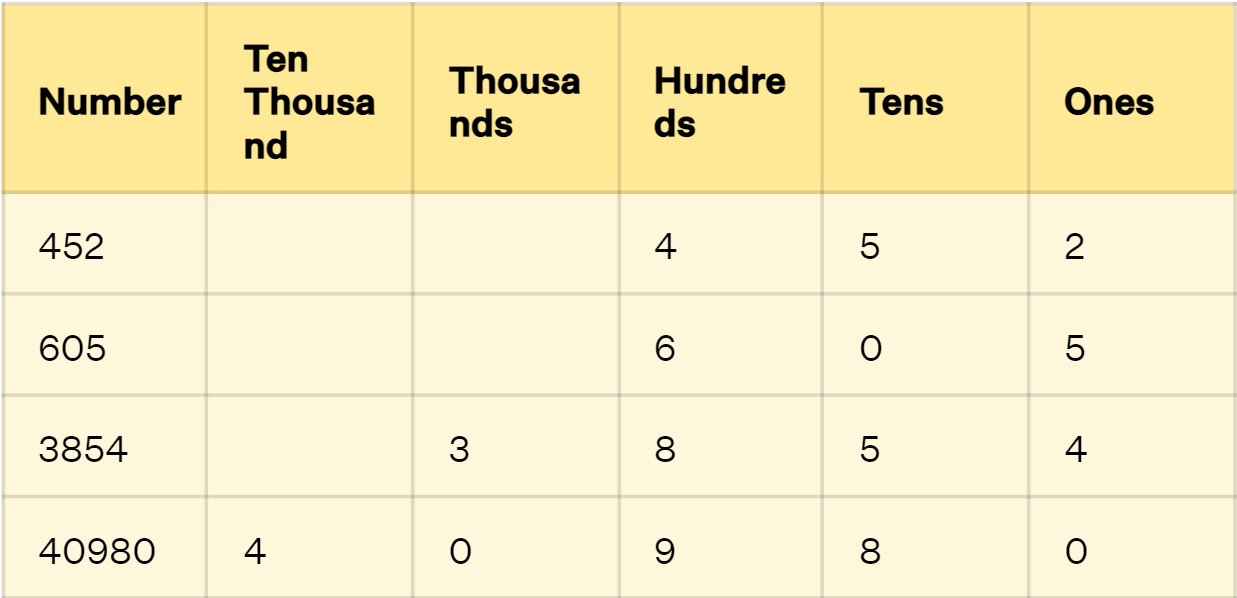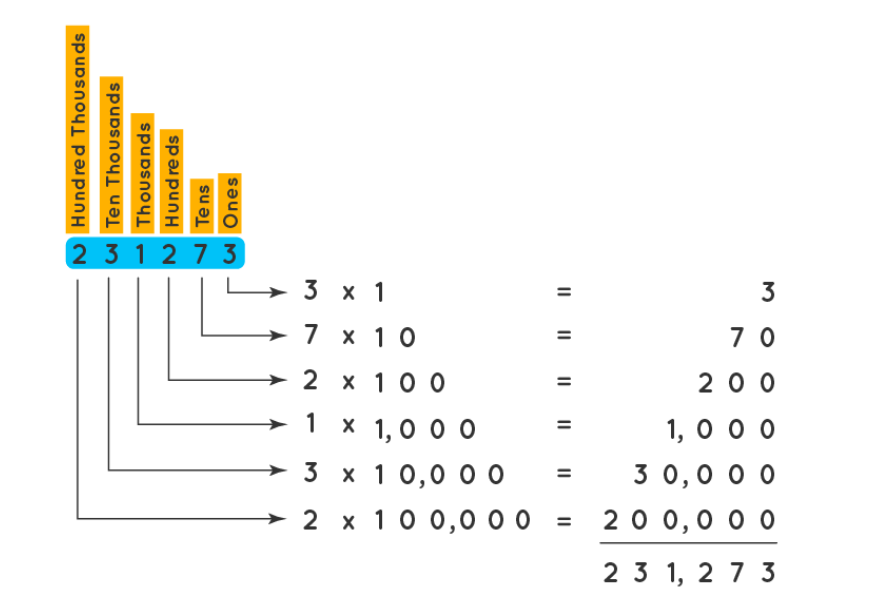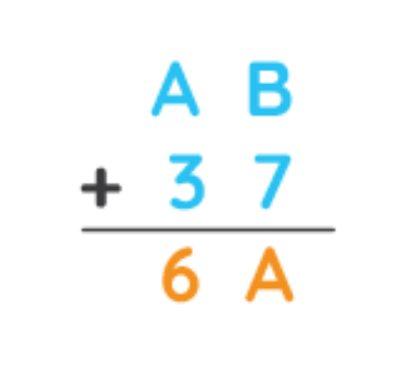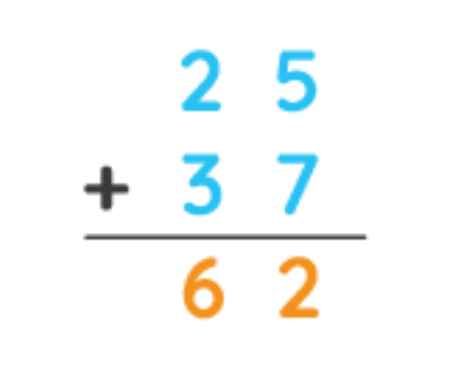PLAYING WITH NUMBERS for Class 8 MATHS
INTRODUCTION
Baccho, aaj hum "Playing with numbers" chapter pdhenge. Baacho, aapne apni previous classes m number system aur types of numbers k baare m pdha hua hai like integers, natural numbers, etc. Iss chapter m hum inn numbers se related aur cheezein explore krenge based on their interesting properties and rules. We will also learn justifications of various divisibility rules that we have learnt in our previous classes. So let's begin!
Numbers in General Form
Baccho. numbers ko general form m likhna is similar to writing numbers in expanded form. Aapne apni previous classes m place values k baare m pdha aur aap jaante hai ki har number k har digit ki ek place value hoti hai which starts with ones, tens, hundreds, thousands and so on starting from rightmost digit.
Expanded form is useful to split and present the higher digit number in its units, tens, hundreds, thousands form. An expanded form helps to better understand and rightly read the higher digit numbers. A number of the form 10,030, is sometimes difficult to understand directly and can be represented in expanded form as 10030=10,000+30.
Some more examples of the expanded form are provided in the following table.

The expansion of a number is the separation of numbers based on place values. This is the intermediate step that helps us understand how the number has to be read. The expanded form helps us to know the place value of each digit within a number. Further, there are three different ways to write numbers in expanded form. The number 4537 can be written in one way of expanded form as 4531=4000+500+30+7, in the second way as 4531=4×1000+5×100+3×10+7×1, and in the third way as 4537=4×thousands+5×hundreds+3×tens+7×ones.
Expanded Form in Maths: Here are the below steps, which you can follow to write the expanded form:

Games with Numbers
(i) Reversing the digits – two digit number
Baccho, iss section ko hume ek game se start krenge! Follow the given steps and observe:
Surprised? Well let's see how did this happen using variables.
Suppose the number you chose is ab which is a short form for the 2-digit number 10a+b. On reversing the digits, we get the number ba=10b+a.
When he adds the two numbers he gets:
(10a+b)+(10b+a)
=11a+11b
=11(a+b).
So, the sum is always a multiple of 11.Observe here that if we divide the sum by 11, the quotient is a+b, which is exactly the sum of the digits of chosen number ab.
Baccho a similar pattern will follow if you divide the two numbers instead of adding and divide the resultant by 9. Try it out!
(ii) Reversing the digits – three digit number
Let's follow another quick game for this section. Follow the given steps:
Let us see how this trick works.
Let the 3-digit number chosen be abc=100a+10b+c.
After reversing the order of the digits, we get the number cba=100c+10b+a.
On subtraction:
=99a–99c=99(a–c).
In each case, the resulting number is divisible by 99. So the remainder is 0. Observe that quotient is a–c or c–a. You may check the same by taking other 3-digit numbers.
(iii) Forming three-digit numbers with given three-digits.
Follow the given steps to understand this section:
(a) ‘the first number is cab (i.e., with the ones digit shifted to the “left end” of the number);
(b) the other number is bca (i.e., with the hundreds digit shifted to the “right end” of the number).
Now add them up.
Try to translate this trick into variables and understand it better!
Letters for Digits
Baccho, iss section m hum kuch puzzles dekhenge jinme ek digit ki jagah ek letter hoga in an arithmetic sum and we'll have to find out which digit does that letter represent in a way that it satisfies the sum. We'll deal with problems of addition and multiplication.
Here are two rules we follow while doing such puzzles.
1. Each letter in the puzzle must stand for just one digit. Each digit must be
represented by just one letter.
2. The first digit of a number cannot be zero. Thus, we write the number “sixty
three” as 63, and not as 063, or 0063.
A rule that we would like to follow is that the puzzle must have just one answer.
Example 1: Find the values of the letters in the following.

Solution:
Each letter in the given puzzle must stand for just one digit.
The operation performed here is addition.
The addition of A and 3 is giving 6. There can be two cases.
(a) First step is not producing a carry. In that case, A turns out to be 3 as 3+3=6.
Considering the first step in which the addition of B and 7 is giving A (i.e., 3), B should be a number such that the unit’s digit of this addition comes to be 3. It is possible only when B=6.
In this case, B=6+7=13.
However, A is a single-digit number. Hence, it is not possible.
(b)First step is producing a carry. In that case, A turns out to be 2 as 1+2+3=6.
Considering the first step in which the addition of B and 7 is giving A (i.e., 2), B should be a number such that the unit’s digit of this addition comes to be 2. It is possible only when B=5 and 5+7=12.

Hence, the values of A and B are 2 and 5 respectively.
Example 2: Find the values of the letters in the following and give reasons for the steps involved.

Solution:
Each letter in the given puzzle must stand for just one digit.
The operation performed here is multiplication.
The multiplication of A and A gives a number whose one’s digit is A again.
Hence, A must be 1 or 6.
Let A be 1. Therefore, A×A=1×1=1≠9. So, the value of A cannot be 1.
Hence, A must be 6 only. For A=6, we get A×A=6×6=36 and 3 will be a carry for the next step.
Therefore, A×1=6×1+3(Carried on) =9

Hence, the value of A=6.
Look at more examples to understand better.
Example 1
Find Q in the addition. 31Q+1Q3=501
Here, 31Q+1Q3=501
If we add unit digits Q and 3, it becomes Q+3.
So, Q+3 should be equal to the unit digit of 501 that is 1.
So, Q can be 8. If we replace Q by 8 and verify the addition, it satisfies the addition. So,
Q=8
Example 2
Find the values of the letters and give reasons for the steps involved. 2AB+AB1=B18
2AB+AB1=B18
If we look at the unit digits of the given equation,
only value possible for B is 7 as 7+1 = 8.
So,
2A7+A71=718
Now, only possible value for A can be 4 as 4+7 =11.
If we try A=4 and B=7, then, it satisfies our addition. So, this is the correct answer.
Example 3
Find the values of the letters and give reasons for the steps involved. 3A+25=B2
3A+25=B2
If we add only unit digits, then,
A+5=2
Only possible value for A is 7.
So, addition is 37+25=62.
So, B=2.
Tests of Divisibility
Baccho, aapne apni previous classes m 10,5,2,3,6,4,8,9,11 k divisibility tests k baare m pdha hua hai. Iss section m hum pdhenge ki why do these divisibility tests work.
1.Divisibility by 10
Baccho 10 ka divisibility test sabse easy hota hai smjhne k lie. Let's start by observing multiples of 10: 10,20,30,40,50... and so on.
Jaisa ki aap dekh skte hai 10 k saare multiples 0 p end hote hai. Which implies that if a number has 0 at its ones place then it is divisible by 10.
We only need to remember the rules of place value. Take the number. ...cba; this is a short form for:
...+100c+10b+a
Here a is the one’s digit, b is the ten’s digit, c is the hundred’s digit, and so on. The dots are there to say that there may be more digits to the left of c.
Since 10,100,... are divisible by 10, so are 10b,100c,... . And as for the number ais concerned, it must be a divisible by 10 if the given number is divisible by 10. This is possible only when a=0.
Hence, a number is divisible by 10 when its one’s digit is 0.
2. Divisibility by 5
Look at the multiples of 5:
5,10,15,20,25,30,35,40,45,50
We see that the one’s digits are alternately 5 and 0, and no other digit ever
appears in this list.
So, we get our test of divisibility by 5.
If the ones digit of a number is 0 or 5, then it is divisible by 5.
Let us explain this rule. Any number ...cba can be written as:
...+100c+10b+a
Since 10,100 are divisible by 10 so are 10b,100c,... which in turn, are divisible by 5 because 10=2×5. As far as number a is concerned it must be divisible by 5 if the
number is divisible by 5. So a has to be either 0 or 5.
3. Divisibility by 2
Baccho, humne pdha hai ki 2 ki divisibility test k lie hum dekhte hai ki agar ek number k ones place p even digits (0,2,4,6,8) hai ya nahi. If they are even then the whole number is divisible by 2.
The explanation for this is as follows:
Any number cba can be written as 100c+10b+a
First two terms namely 100c,10b are divisible by 2 because 100 and 10 are divisible by 2. So far as a is concerned, it must be divisible by 2 if the given number is divisible by
2. This is possible only when a=0,2,4,6or8.
4.Divisibility by 9 and 3
The divisibility rule of 3 and the divisibility rule of 9 are slightly similar.
(i) A number N is divisible by 9 if the sum of its digits is divisible by 9. Otherwise it is not divisible by 9.
(ii) A number N is divisible by 3 if the sum of its digits is divisible by 3. Otherwise it is not divisible by 3.
If the number is ‘cba’, then, 100c+10b+a=99c+9b+(a+b+c)=9(11c+b)+(a+b+c){where,9(11c+b)is÷isib≤by⊥h3and9}<br>Hence,÷isibilityby9(or3)ispossib≤ifa + b + cis÷isib≤by9(or3).
Example 4
Check the divisibility of 21436587 by 9.
The sum of the digits of 21436587 is 2+1+4+3+6+5+8+7=36. This number is divisible by 9 (for 36÷9=4). We conclude that 21436587 is divisible by 9.
Example 5
Check the divisibility of 152875 by 9.
The sum of the digits of 152875 is 1+5+2+8+7+5=28. This number is not divisible by 9. We conclude that 152875 is not divisible by 9.
Example 6
If the three digit number 24x is divisible by 9, what is the value of x?
We know that sum of numbers should be multiple of 9
2+4+x=9
6+x=9
x=3.
Example 7
Check the divisibility of 2146587 by 3.
The sum of the digits of 2146587 is 2+1+4+6+5+8+7=33. This number is divisible by 3(for33÷3=11). We conclude that 2146587 is divisible by 3.
SUMMARY
1. Numbers can be written in general form. Thus, a two digit number ab will be written as
ab=10a+b.
2. The general form of numbers are helpful in solving puzzles or number games.
3. The reasons for the divisibility of numbers by 10,5,2,9 or 3 can be given when numbers are written in general form.
LET'S REVISE
1. Baccho iss chapter m humne apni previous knowledge related to number system ko use krke aur topics explore kiye.
2. We learnt about how to express a number in general/expanded form and how we can use the same knowledge to learn about tricks related to numbers.
3. Humne ye bhi seekha ki agar hume ek given sum ya multiplication m ek digit k jagah ek alphabet given ho to hum use kaise crack krke uss alphabet ki numerical value nikaal skte hai.
4. Lastly, we used variables to justify various divisibility tests for numbers like 10,5,2,3,9.
